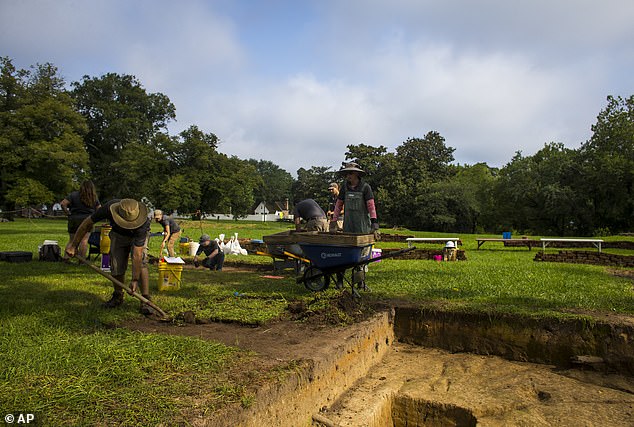Archaeologists in Virginia have discovered an opulent colonial-era garden where slaves grew exotic plants owned by the family of Martha Washington’s first husband.
The Williamsburg Garden belonged to John Custis IV, a tobacco plantation owner who served in the colonial Virginia legislature and father of Martha Washington’s first husband, Daniel Parke Custis.
Custis’s garden was designed to display his wealth and excavation determined that the garden was about two-thirds the size of a football field.
Experts used Custis’ correspondence with British botanist Peter Collinson to determine that his enslaved gardeners tended exotic plants and that guests were greeted with flowers such as the imperial lily, which was native to the Middle East and parts of Asia.
“In the 18th century, these things were unusual; only certain classes of people could experience them. Today, a wealthy person buys a Lamborghini,” said Eve Otmar, a master historic gardener at Colonial Williamsburg.
Archaeologists in Virginia have discovered an opulent colonial-era garden where slaves grew exotic plants
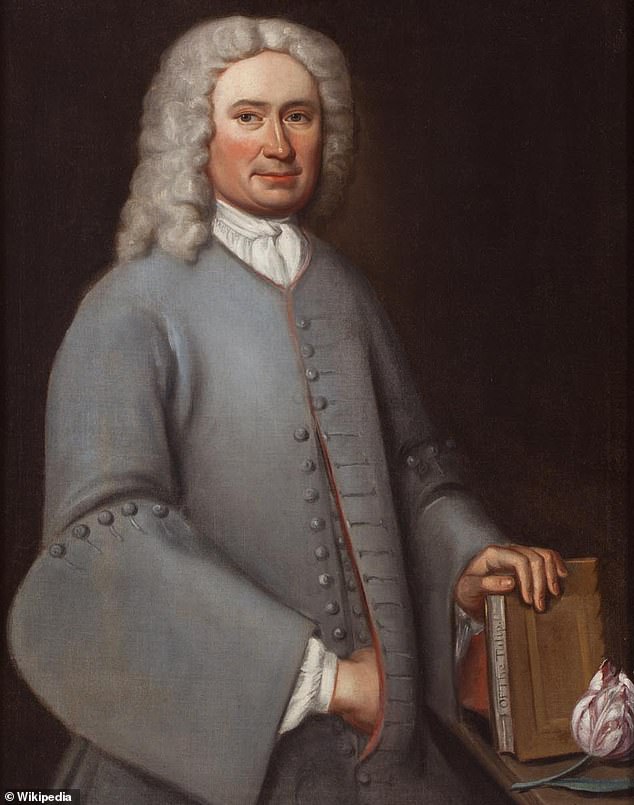
The Williamsburg Garden belonged to John Custis IV (pictured), the father of Martha Washington’s first husband, Daniel Parke Custis.
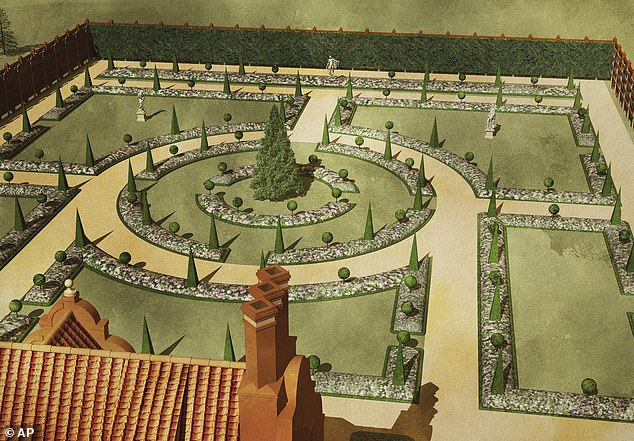
A preliminary rendering of the reconstructed garden shows topiaries trimmed into balls and pyramids in the garden.
A study of the area’s topography placed his garden in direct view of Williamsburg’s only church at the time.
Contemporary descriptions refer to statues of Greek gods and topiaries cut into balls and pyramids in the garden.
Crews unearthed three-foot-thick fence posts carved from red cedar. Gravel paths were discovered, including a large central driveway, and stains in the soil indicated where plants were growing in rows.
There are also plans to recreate Custis’s home and garden in Williamsburg, then known as Custis Square. Unlike some historic gardens, the restoration will be done without the aid of surviving maps or diagrams, relying instead on detailed landscape archaeology work on the museum’s history.
Custis is believed to have made one of the first written mentions in Williamsburg of the cultivation of tomatoes, then known as “love apples” and native to Mexico and Central and South America.
Slaves also planted strawberries, pistachios and almonds, among 100 other imported plants. A recent analysis of soil pollen indicates the past presence of stone fruits such as peaches and cherries.
“The garden may have been Custis’ vision, but he didn’t do the work,” said Jack Gary, executive director of archaeology at Colonial Williamsburg, a living history museum that now owns the property.
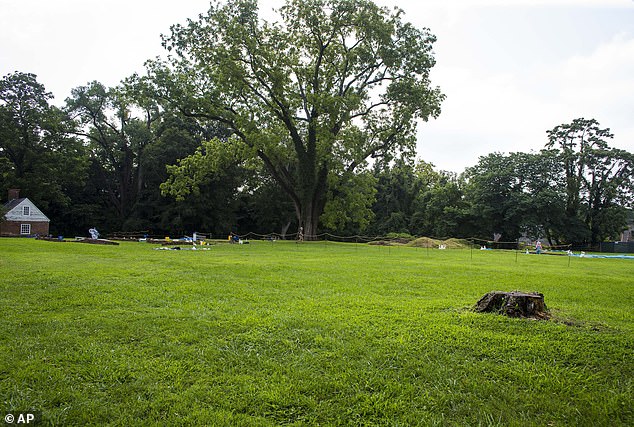
Crews unearthed posts about a metre thick carved from red cedar.
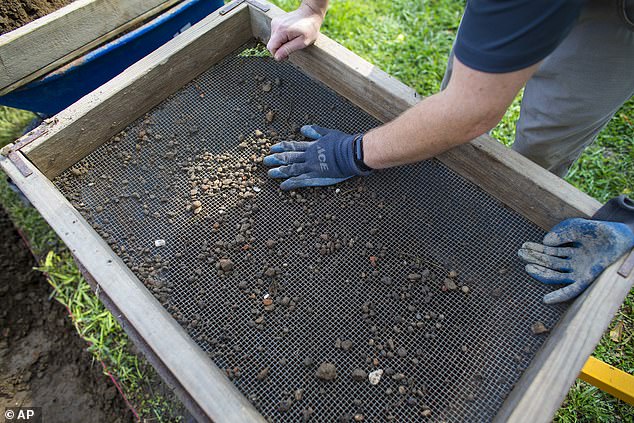
The excavation also unearthed a pierced coin that young African-American men often carried as a good luck charm.
‘Everything we see on the ground related to the garden is the work of enslaved gardeners, many of whom must have been very skilled.’
The excavation also unearthed a pierced coin that African-American youths often carried as a good luck charm. Another find was fragments of a clay chamber pot, which was a portable toilet and was probably used by enslaved people.
It appears that some animals were intentionally buried under some fence posts. Among them were two decapitated chickens and a cow’s leg. A skullless snake was found in a shallow hole that probably contained a plant.
“We have to ask ourselves if we’re looking at traditions that aren’t European,” Gary said. “Are they West African traditions? We need to do more research. But it’s features like that that keep us trying to understand the enslaved people who lived in this space.”

